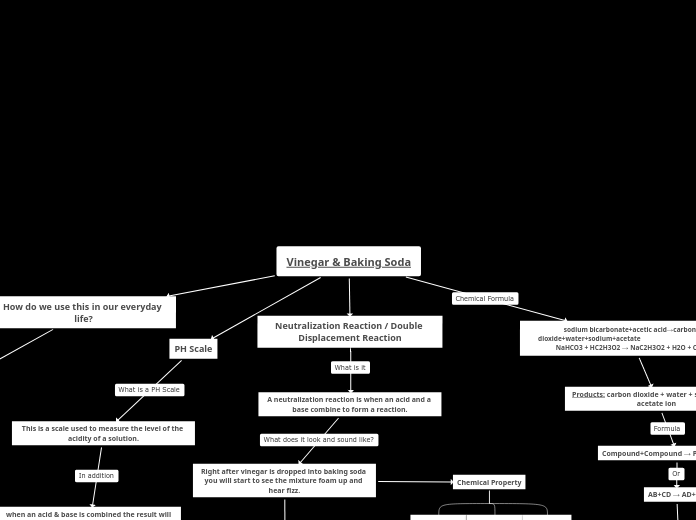Introductory Biology II Concept Map - Aresha Bagheri
Selection
sexual selection
females chosing males based on their phenotype
2 components
females choose
males compete
ex.peacocks
directional selection
extremes are favored
ex. peppered moths
stabilizing selection
intermediates have advantage
response to selection
selection differential
measures intensity or strength of selection
heritability
proprotion of phenotypic variation that has a genetic basis
rated from 0 to 1, 0 is environmentally based, 1 is genetically based
artificial selection
the selective breeding of domesticated plants and animals to encourage the occurance of desirable traits
ex. corn crops
natural selection
individuals that have certain inherited traits tend to survive and reproduce at higher rates than other individuals because of those traits
ex. antibiotics
Global Warming
future effects...
biological impacts
species extinction
coral bleaching
earlier spring events
altitudinal/poleward shifts in species ranges
warming oceans
more intense hurricanes
melting ice caps
rising sea levels
change in precipitation
caused by...
depletion of the ozone layer
CFC's deplete ozone
greenhouse gasses
human activity
such as CO2
The greenhouse effect - the trapping of heat in the atmosphere by certain greenhouse gasses.
Water vapor
CFC's
produced from cleaners, aerosols, refridgeration and cooling
nitrous oxides
combine with sulfur dioxide to produce acid rain
produced naturally and man made
CH4
produced in rice paddies, wet agriculture, intestinal system of cows, floors of oceans
CO2
The increasse of the global average temperature on Earth
by the end of the century about 4 degrees Celcius hotter
1 degree Celcius hotter on average
Population Genetics
Hardy-Weinberg Equilibrium
p+q=1, p²+2pq+q²=1
If Hardy Weinberg conditions are not met, then the population is evolving.
Allele and genotypic frequencies remain the same from generation to generation in a population in which there is...
no selection
selection - differential reproduction among different phenotypes within a population
response to selection depends on the selection differential and the heritability of the trait in question
random mating
asexual reproduction
offspring are genetically identical to the parent
positive assortive mating
increases homozygosity only at the locus for which the choice occurs
Inbreeding - mating between relatives - not random mating
selfing - most severe form of inbreeding
heterozygosity is halved between generations
leads to inbreeding depression - decrease of vigor or reproductive success due to inbreeding
no migration
migration (gene flow) - the movement of genes between populations
allele frequencies change in the direction of the doror/source population due to migration
p(M)=p(I)M+p(R)(1-M)
migration tends to eliminate existing genetic differences between populations
migration rate - the proportion of immigrants in a population after migration
no genetic drift
genetic drift - random changes in allele frequencies from generation to generation
bottleneck effect - random changes in allele frequencies within a population due to dramatic reduction of population size
reduction in size is either caused by some catastrophic events, or only the frequencies of those loci are considered that are not under selection
founder effect - random changes in allele frequencies in a population during colonization
founder effect occurs within the same generation
genetic drift results from sampling error in a population with limited size
no mutation
mutation - random change in the genetic code
majority of mutations are detrimental
mutation rates for many genes can vary from one out of ten to one hundred thousand
the ultimate source of genetic variation in a population
Genetic Variation in a Population
allele frequency
the proportion of a certain allele within a population
allele frequency=gene frequency=gametic frequency
gene pool
the set of all alleles at all loci in a population
Energy Flow in Ecosystems
An ecosystem is a group of organisms that are connected by energy and mineral flow.
Energy is transferred from one trophic level to the next
handling time - the time it takes from capture of food item by a foraging organism to digestion
energy flow is non-cyclic
the sun is the primary source of energy
producers
net primary productivity
gross primary productivity minus plant respiration
gross primary productivity is the total photosynthesis per unit area per time
plant growth per unit area per unit time
Only .02% of the sun's energy is captured by plants
herbivores
carnivores
top carnivores
heat energy lost
decomposers and detritivores
Only 1/3 of energy is transferred from one trophic level to the next.
The rest of the energy is lost as heat.
Human Evolution
evolution - changes in allele frequencies within a population
trends in human evolution
development of language paralells the evolutionary process
longer lifes span and and longer dependency
brain size in Hominid lineage increased dramatically from 500 to 1350 cubic centimeters
The oldest fossil remains of human ancestors were found in Africa.
then spread to the Middle East
Domestication first occured in the Middle East an South Europe 11,000 years ago
to Asia
60,000 years ago
to Australia
to North America via land bridge
to South America
to Europe
Hominids (Australopithicus and Homo) and apes diverged from a common ancestor 5 million years ago.
The oldest Hominid was Ardipithecus ramidus
Australopithecus anamensis
A. afarensis
Homo rudolfensis
H. habilus
was a toolmaker
H. erectus
Turkana boy
1 million years ago
H. sapien
H. sapien sapien (modern human)
evolved 50-35,000 years ago
H. sapiens (Neanderthals)
humans have 3% neanderthal DNA
died out 22,000 years ago
evolved 300,000 years ago
Lived 2 million years ago to 1.8 million y.a.
Homo genus evolved 2 million years ago
A. africanus
Taung child
discovered in South Africa
A. robustus
2 million years ago
A. boisei
2.5 million years ago
3 million years ago
Lucy was an A. afarensis
discovered in Hadar, Ethiopia
4 million years ago
Ardipithecus was bipedal
Human DNA is 98.8% similar to the DNA of chipanzees
Biogeochemical Cycles
The Nitrogen Cycle
Plants use two inorganic forms of nitrogen - ammonium and nitrate - and amino acids. Bacteria use these forms too as well as nitrite, animals can only use organic forms of nitrogen.
the nitrogen cycle
terrestrial cycling
reactive N gasses
denitrification
fertilizers
Industrial fixation
aquatic cycling
NO3- in the water
N2 in atmosphere
Reservoirs of nitrogen include...
biomass
surface water and groundwater
sediment
the soil
the atmosphere (80%)
The Water Cycle
Water is essential to all organisms, and its avaliability influences the rates of ecosystem processes.
Water cycle
Transpiration
Runoff and groundwater
Percolation through soil
Precipitation
Condensation of water vapor into clouds
Evaporation by solar energy
1% of water is contained in lakes, rivers, and groundwater (negligible amount in atmosphere).
2% Of water is contained in polar ice caps.
The oceans contain 97% of water in the biosphere.
Liquid water is the primary physical phase of water.
The Carbon Cycle
Carbon forms the framework of the organic molecules essential to all organisms.
the carbon cycle
burning of fossil fuels
phytoplankton
consumers
cellular respiration
Photosynthesis
CO2 in atmosphere
Major reservoirs of carbon include...
sedimentary rocks (the largest reservoir)
the atmosphere
plant and animal biomass
the oceans
sediments of aquatic environments
soils
fossil fuels
Carbon is available in the form of CO2 to plants, which convert it to organic forms that are used by other organisms.
The Phosphorous Cycle
Organisms require it for nucleic acids, phospholipids, ATP and mineral components.
phosphorous cycle
leaching into aquatic environments
decomposition
plant uptake
runoff
weathering of rocks
geological uplift
reservoirs include...
organisms
oceans
soil
sedimentary rocks
Most important inorganic form is phosphate, which plants use to create organic compounds.









